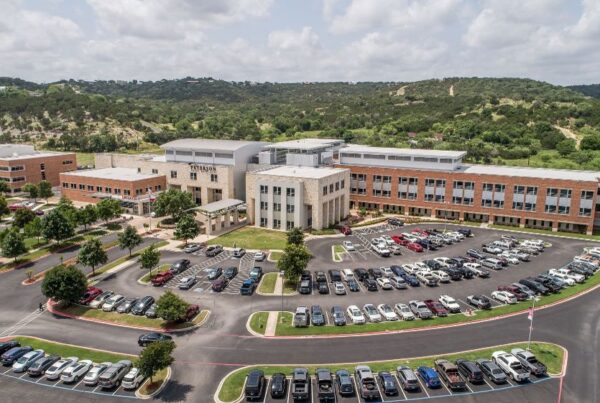CHARGE RECONCILIATION
Ensuring that all professional charges have been accounted for and properly billed, a process known as charge reconciliation, is an important process for a hospital’s revenue cycle and its financial health. At a time when hospitals are facing continued financial challenges, making certain that your organization is paid for all the services it has provided has never been more important, and not just to cover the organization’s current costs. Assuring appropriate reimbursement can also impact future reimbursements, insurance contract negotiations, and future incentivized payment models.
But reconciling in a timely manner is not an easy process. Coders, revenue-cycle specialists, providers, and compliance officers all participate in the reconciliation process, making it resource-intensive. Data from different sources must be compiled for each encounter. In short, without the proper tools, it can be an expensive process during a time of revenue shortages. Organizations implementing an efficient reconciliation process, however, can expect a significant financial impact into the future.
THE GAP
For physicians working in a busy hospital, days can blur together. There is always a lot going on: seeing patients on multiple floors and in multiple locations; admitting, transferring, and discharging patients; communicating with families and colleagues; evaluating test results; documenting all they have done on the patient electronic record. Recording charges for all those activities is not always a priority for providers given their appropriate focus on patient care. Couple the intense work environment with a lower priority responsibility, and your organization can end up with a gap—incomplete or missing charges for care provided.
The gap can have a significant impact on any organization. It can cause missed or incomplete reimbursement which we have seen often reaches at least 3% of potential professional charges. The revenue leakage is even higher in more problematic areas such as inpatient rounding and consult charges. It can also cause provider dissatisfaction as it could be a contributing cause of unrealized compensation objectives. It can result in lower coding accuracy which may result in lower ratings for pay-for-performance arrangements. It will increase labor costs by forcing organizations to engage more resources to help address the issues. It can result in payment delays as charges are being corrected or created. And it can result in exceeding timely filing limits.
Aside from the everyday bustle of the hospital, other factors can contribute to the reconciliation gap. EHRs were designed to focus on clinical care at the individual patient level, ensuring effective and complete clinical documentation. They were not designed to handle the complexity of charge reconciliation or revenue cycle management. For this process, information is often compiled from multiple screens or worse, multiple different systems. Those tasked with assuring accurate charges often must wait for documentation to be completed, recorded, and available before ensuring that a charge has been entered. Many of these EHR documentation systems are not updated in real time, contributing to a delay (lag) in the charge being approved. In fact, it is common for organizations to build in a charge processing delay of several days in order to accommodate late documentation before performing their reconciliation process. This contributes to higher A/R days.
Identifying missing documentation or charges associated with an encounter is crucial in an efficient reconciliation process. If a gap exists, tracking it in real time provides the opportunity to address it immediately, creating an efficient feedback loop.
THE FEEDBACK LOOP
Once the issues causing the gap have been identified, it is essential that they be addressed quickly and efficiently. That requires feedback from the reconcilers who recognized the issue back to those most responsible for creating the problem. Communication between the “back-end” reconcilers and the “front-end” charge producers must be clear and outline the appropriate and compliant process to address the problem. It should occur as soon as the issue has been identified and should be presented in a clear and concise form. None of that can happen if administrators are relying on “month end” reports to identify potential problems and communicating their findings up to 30 days after the issue occurred. If the data used in the reconciliation process is static or is not updated in real or near-real time, that will contribute to an inefficient reconciliation process.
The ability to detect problematic patterns or outliers can best be accomplished with real time analysis. If you can see what is happening today, you might be able to prevent small issues from becoming bigger problems.
The feedback loop is a key piece in an organization’s ability to consistently improve efficiency. Identify the problems early. Address them immediately. Achieve a resolution. Prevent them from recurring.
FIXING THE GAP
There are many ways an organization can improve their reconciliation process. Investing in technology that actively seeks out potential charge opportunities—like consults, for example—often results in immediate financial improvement. Some additional specific suggestions for optimizing your charge reconciliation process are outlined below.
- Incorporate tools that offer real-time snapshots of charges created or in progress. Close to real-time analysis will allow administrators to detect and correct problems as they arise, rather than waiting until official month end reports are available. By then, the problem may very well have grown. Review the data often to detect patterns (e. g. – “Provider forgets to enter charges for patients on floor B”).
- Standardize the feedback loop and provider communication related to charging issues and implement corrective actions as soon as possible. (e.g. – Send note to provider that they forgot to charge for patients on floor B today.)
- Leverage reporting and analytics for consistent process improvement with bottlenecks or reconciliation risk areas.
- Aggregate data. Allow reconcilers to view charge data, rounding lists, documentation, and patient information in as few applications as possible to be more efficient and reduce system fatigue.
- Analyze denials to identify existing issues, then implement feedback loops. Incorporate denial feedback into mid-revenue cycle charge scrubbing. The goal should be continuous improvement and consistently better efficiency.
- Standardize process changes enterprise-wide as part of the feedback loop.
- Provide comprehensive education on technology and processes for providers, reconcilers, and administrators.
STEPS TO TAKE RIGHT NOW
Start by evaluating your technology options. Does your current technology support your business goals by assuring every encounter is charged correctly? If not, is there technology available that will help you reach those goals? You should also re-evaluate your current state reconciliation workflow. Where are the gaps right now? Are there more efficient ways that can be deployed to achieve better results?
Optimizing your professional charge reconciliation process can pay great dividends. For more information, visit www.medaptus.com
Related Blogs:
How to fill mid-revenue cycle gaps in your EHR | Part 2: Scalability
Get the latest updates and news delivered to your inbox.
Subscribe to our newsletter today.





